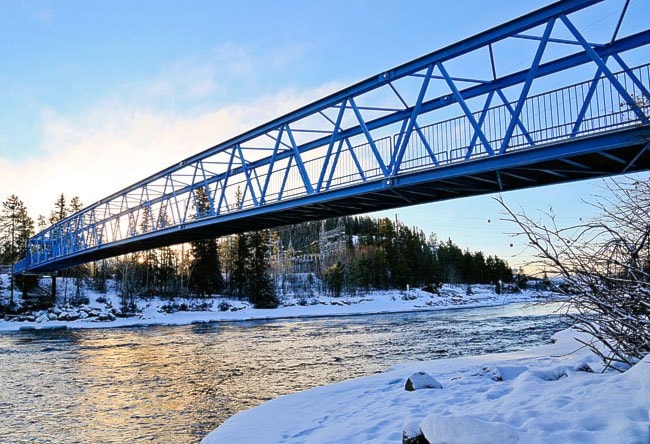In a way that seems characteristic of contemporary, affluent Whitehorse, both sides of the debate over whether to allow motorized vehicles on Rotary Centennial Bridge have succeeded in coming across as unreasonable and self-entitled.
The snowmobilers and quad riders who want access to the bridge speak of how it’s unfair that they don’t have ridable access to the trails west of the Yukon River. But the Riverdale residents doing this complaining have never had such access, so it remains puzzling why this is considered a matter of fairness. It’s sort of like saying that it’s unfair that Copper Ridge residents don’t have a free shuttle bus to Mount Sima, or Porter Creek residents don’t have a dedicated roller derby rink. These things would all be nice, but nobody is entitled to them. Similarly, and contrary to what some may believe, Canada offers no constitutional right to ride snowmobiles and ATVs wherever you please.
On the other side of the debate, some of the shriller opponents of offroad riders within the city seem to believe that they possess a God-given right to not be subjected to the whine of snowmobiles from within earshot of their greenbelt properties. Such an attitude ignores the fact that, well, this is Whitehorse, and the popularity of offroad vehicles is part of the character of the place.
Naysayers say that allowing motorized vehicles on the bridge will spoil the tranquility along one of the city’s most popular pedestrian trails. It’s probably true that the presence of these vehicles would make things a bit less pleasant for other users, but let’s keep some perspective. Motorized vehicles would only ride along a small section of the trail, so these encounters would be brief.
And let’s remember that the Millenium Trail is in urban Whitehorse, not the Peel watershed. A good chunk of the footpath runs alongside busy roads, so pedestrians along the path are already exposed to the din of motorized vehicles and whiffs of exhaust.
The bridge itself offers a great view of the Yukon River. But much of the view up-river is of the Whitehorse hydro-electric dam and its accompanying infrastructure, so let’s not pretend the area is unsullied wilderness, and that the encroachment of motorized vehicles would utterly transform the experience.
The other big objection has to do with safety. Anyone who has witnessed a young snowmobiler recklessly speeding around a neighbourhood should be able to appreciate this concern isn’t totally baseless.
Yet riders rightfully point out that, outside the big city here, many rural residents get along just fine sharing trails between snowmobiles and skiers. Reasonable riders should be able to safely navigate the bridge and a short bit of the Millennium Trail before cutting off into the bush. Is it fair to assume some snowmobilers using the trail will be irresponsible?
Perhaps. There are principled grounds for city council to simply forbid offroad riders from using the bridge. Millenium Trail’s stated purpose is to encourage active living. It is one of the city’s best-used pedestrian trails, particularly popular with elderly residents and families pushing baby strollers. Both the bridge and trail are narrow spaces with tight corners that never appear to have been designed with the intention of allowing motorized vehicles on them.
It would be a shame if some of these residents were deterred from using the trail for fear of being schmucked. And it would only take one elderly walker to be bowled over by a snowmobiler for everyone, in hindsight, to consider allowing vehicles on the bridge as being a dumb idea.
Alternately, city council could proceed cautiously and allow motorized vehicles to use the bridge for a trial period. Access could be restricted to certain time of the week, and clear rules could be posted to ensure vehicles stuck to one side and travelled at a slow speed. Bylaw officers could monitor the bridge area to enforce these rules during this period.
If there is havoc, they could quickly pull the plug on the experiment. Who knows? Maybe everyone will get along, and in a few years we’ll all wonder what the big huff was about.
City council is bound to upset some residents no matter what they do. They’ll either be cast as officious, safety-crazed urbanites determined to spoil the fun of Riverdale residents with offroad vehicles, or as weak-kneed push-overs willing to sacrifice one of the most popular walking trails to the operators of stinky, noisy, potentially dangerous motor vehicles. No wonder councillors have punted the controversy to a committee for many months.
Yet eventually they will need to weigh in, with the matter scheduled to come up next month. When they do, hopefully residents remember that this is often what politics is all about: making difficult decisions that inevitably involve painful trade-offs. This law is sometimes suspended in the Yukon, thanks to generous in-flows of federal cash. But you’ll never reach consensus on some divisive issues like this one, and it’s silly to pretend otherwise.
